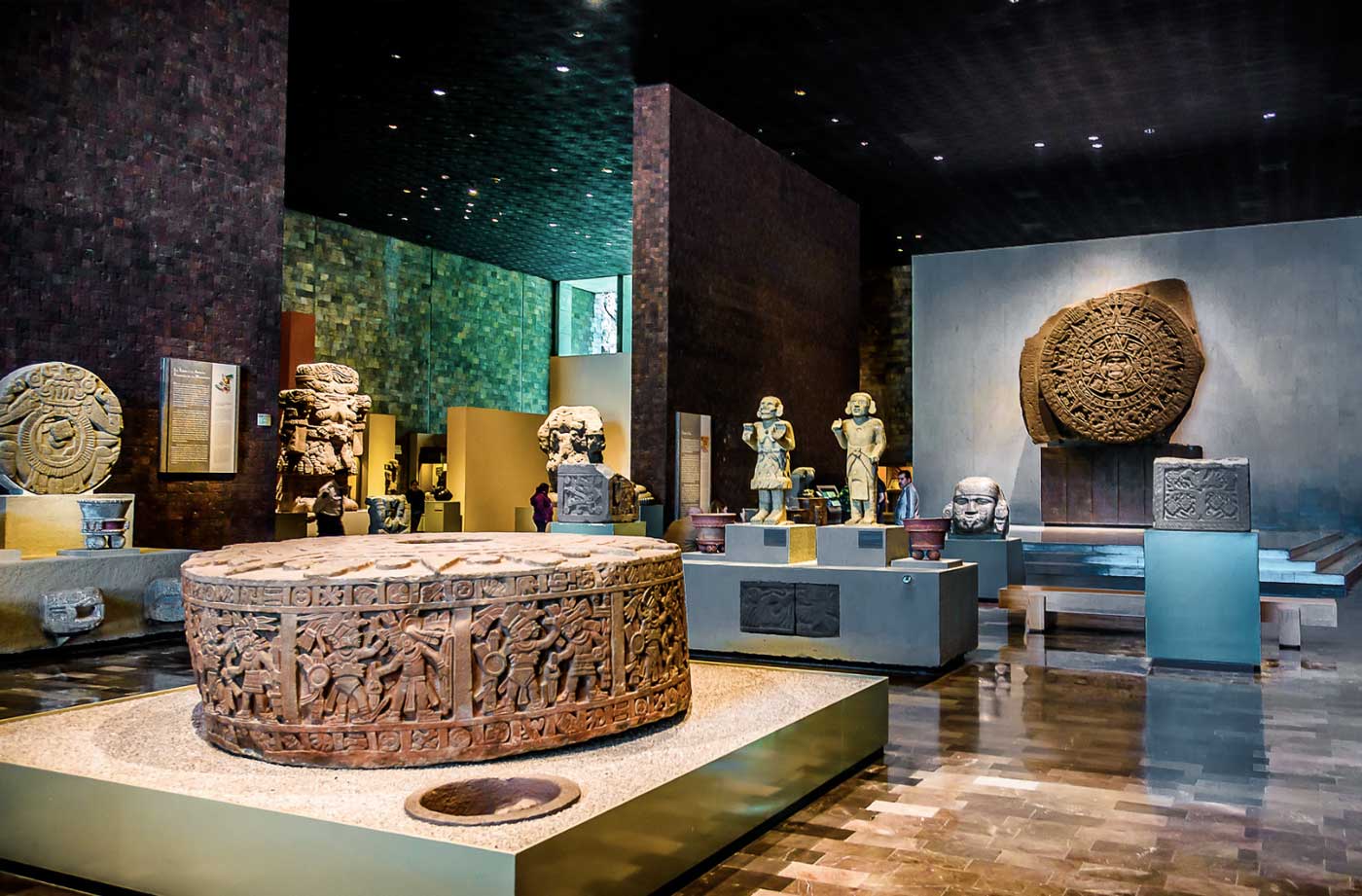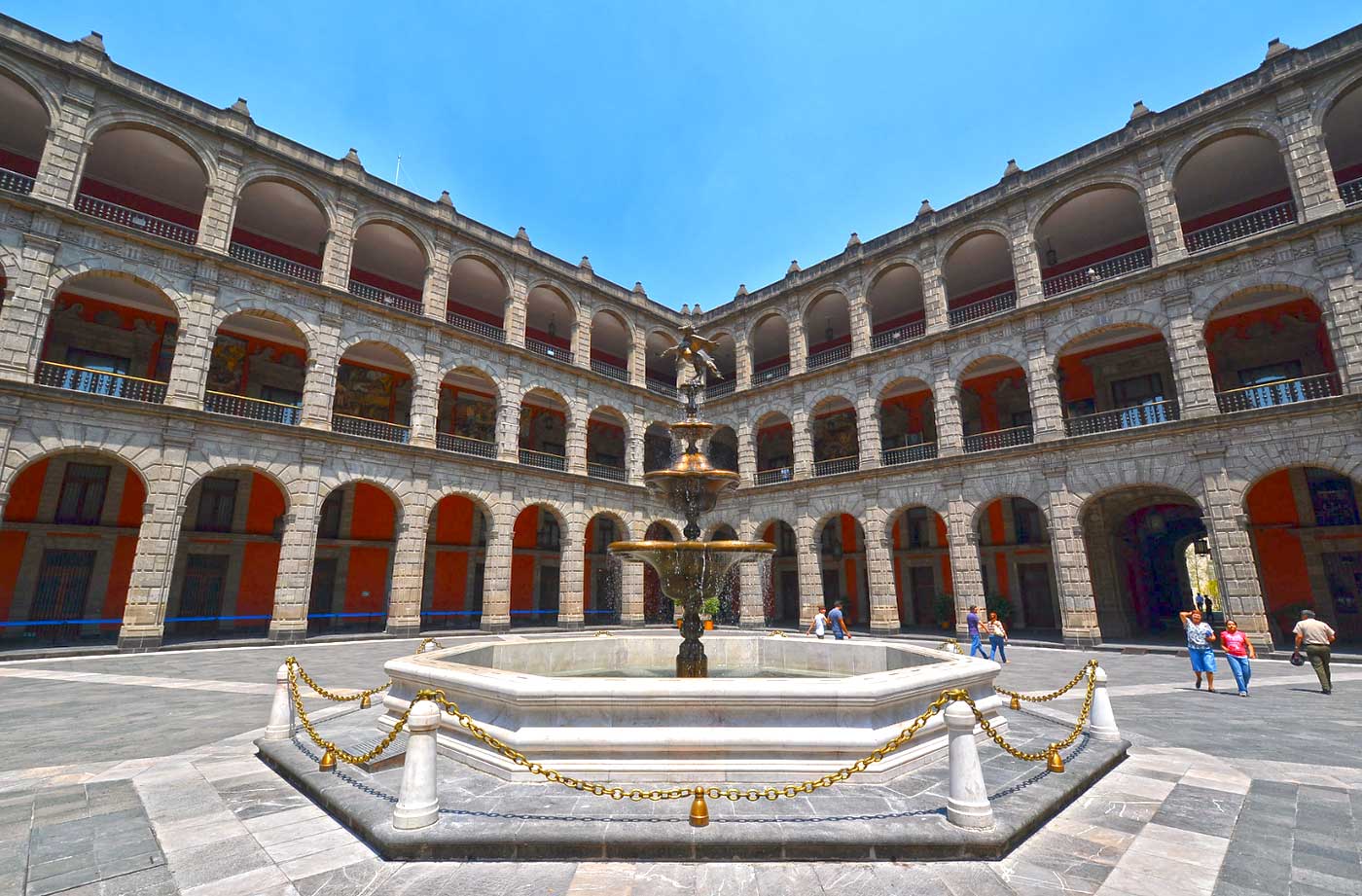From Dawn till Dusk in Mexico City An Insider’s Guide to the Best Ten Attractions
Mexico City, the vibrant capital of Mexico, is a city where the past and present intermingle in a stunning spectacle of culture, history, and urban energy. As one of the largest and most populated cities in the world, Mexico City offers an overwhelming abundance of things to see and do. But fear not, first-time visitors! This guide will take you through ten must-see attractions that encapsulate the essence of this multifaceted metropolis.
From the towering temples of the Aztec empire to the intricate murals that recount the country’s complex history, the stunning architecture that narrates tales of colonial times to the vibrant markets offering an explosion of color and flavor – this city promises an adventure at every corner.
Prepare to be captivated by the city’s vast museums, lush parks, historic neighborhoods, and a food scene that is nothing short of a gastronomic revelation. Get ready to dive headfirst into the cultural heart of Mexico, and let’s begin our exploration of the unforgettable Mexico City.
Here are the 10 best places to visit in Mexico City:
1. Museo Nacional de Antropologia

Embark on a cultural journey at the Museo Nacional de Antropología in Mexico City, globally renowned for its extensive collection representing Mexico’s historical heritage. Here, modern architecture and ancient tradition merge, reflecting in the iconic central courtyard’s stone structure.
Journey through time as you explore the museum’s exhibitions. Discover the Sun Stone in the Aztec Hall, revealing the intricacies of Aztec cosmology. Marvel at Mayan jade masks and ceramics in the Mayan exhibit, representing this civilization’s artistic and intellectual prowess.
Don’t miss the colossal stone heads in the Olmec exhibit, iconic symbols of one of Mexico’s earliest civilizations. The museum also uncovers lesser-known cultures, like the Zapotecs, Mixtecs, and Gulf Coast civilizations, offering an enlightening view of Mexico’s rich cultural tapestry.
A visit to the Museo Nacional de Antropología is a captivating exploration into Mexico’s diverse history, an essential stop for every traveler seeking to delve deeper into the roots of this vibrant city.
2. Chapultepec Castle

Perched atop Chapultepec Hill in Mexico City, the majestic Chapultepec Castle is a sight that simply cannot be missed. Not only is it the only royal castle in North America that was actually used as a residence by a monarch, but it’s also surrounded by the lush expanse of Chapultepec Park, offering unparalleled views of the cityscape.
Built during the colonial period, the castle has served multiple purposes – a military academy, an imperial and presidential residence, and now, the National History Museum. Each room whispers stories of a time long past, showcasing an eclectic collection of artifacts, historical memorabilia, and beautifully preserved period furniture. Its exquisite murals, painted by some of Mexico’s finest artists, add to its artistic appeal.
Whether you’re a history buff, art lover, or simply a traveler seeking beautiful vistas, Chapultepec Castle provides a unique blend of history, art, and stunning views, making it a must-visit location on your Mexico City itinerary.
3. Basilica de Santa Maria de Guadalupe

In the northern part of Mexico City, standing as a testament to the city’s deep-rooted Catholic faith, you will find the Basilica de Santa Maria de Guadalupe. Known as one of the most important pilgrimage sites of Catholicism, it is dedicated to Our Lady of Guadalupe, the patron saint of Mexico, attracting millions of devotees each year.
The site actually comprises two basilicas. The Old Basilica, with its ornate Spanish Baroque architecture, dates back to the 18th century. In contrast, the New Basilica, built in the mid-20th century, is a marvel of modern architecture with its circular design, allowing unobstructed views of the image of the Virgin Mary from any point within the basilica.
Whether or not you’re a religious devotee, the Basilica de Santa Maria de Guadalupe offers a fascinating glimpse into Mexico’s spiritual heart and architectural grandeur. Its historical significance, combined with its impressive architecture, makes it a noteworthy addition to any Mexico City itinerary.
4. Palacio de Bellas Artes

In the heart of Mexico City’s bustling downtown, the Palacio de Bellas Artes, or Palace of Fine Arts, stands as an iconic beacon of art and culture. This stunning marble edifice is a masterpiece in itself, a fusion of Art Nouveau and Art Deco styles, and is considered one of the most beautiful buildings in the country.
Inside, the Palacio is home to a wealth of artistic treasures, from murals by Mexico’s great muralists such as Diego Rivera and David Alfaro Siqueiros, to rotating exhibitions of international art. It’s also a top-tier cultural venue, hosting concerts, theatre performances, and dance shows in its grand theatre.
Whether you’re an art aficionado, architecture enthusiast, or a culture-seeker, the Palacio de Bellas Artes is a destination that encapsulates the vibrant artistic spirit of Mexico City, making it an essential visit on any journey through the city.
5. Coyoacan

A journey to the charming district of Coyoacan feels like stepping back in time, away from Mexico City’s bustling modernity. Known for its cobblestone streets, colorful colonial architecture, and bohemian atmosphere, Coyoacan, meaning “Place of Coyotes” in Nahuatl, exudes a unique blend of history and artsy vibes.
Notably, Coyoacan is the birthplace of the iconic Mexican artist Frida Kahlo, and her Blue House, now a museum, is a major attraction. Equally compelling is the bustling Coyoacan Market, where you can sample local delicacies and shop for unique souvenirs. The district is also known for its lively plazas filled with cafes, artisan shops, and the impressive Parish of San Juan Bautista with its beautiful art-filled interior.
Coyoacan offers an enchanting retreat from the city’s typical pace, immersing you in Mexico City’s artistic and historical side. It’s an area that invites exploration and provides a colorful palette for every traveler’s memories.
6. Museo Frida Kahlo

Nestled in the heart of Coyoacan district, the Museo Frida Kahlo, also known as La Casa Azul or The Blue House, offers an intimate glimpse into the life and work of one of Mexico’s most iconic artists. This cobalt-blue building, Frida Kahlo’s birthplace and the home where she spent most of her life, serves as a profound testament to her creative spirit.
Walking through the house, you can explore the spaces where Frida lived and worked, surrounded by a rich collection of her personal artifacts, pre-Hispanic art, photographs, and some of her most emblematic paintings. The beautifully preserved home and lush gardens still reflect Frida’s vibrant personality and her love for Mexican culture.
A visit to the Museo Frida Kahlo is not only an encounter with her artistic genius but also a dive into her world, her struggles, and her unyielding spirit. It’s an absolute must for art lovers and anyone seeking to understand the profound influence Kahlo has had on Mexico’s cultural identity.
7. Zocalo

The heart of Mexico City pulses in Zocalo, one of the largest public squares in the world. Known formally as Plaza de la Constitución, the Zocalo is a vibrant hub of history, culture, and activity, with a legacy dating back to the Aztec times.
The square is surrounded by some of the city’s most iconic landmarks. To the north, you’ll find the Metropolitan Cathedral, a grandiose example of colonial architecture. On the east, the Palacio Nacional houses Diego Rivera’s epic murals, which chronicle Mexico’s complex history. You can also explore the Templo Mayor, an Aztec temple ruin, offering a glimpse of Mexico City’s pre-Hispanic past.
Visiting the Zocalo offers a microcosm of Mexican history and culture. Whether you’re exploring historic sites, witnessing political rallies, or joining in on cultural celebrations, you’re sure to feel the pulse of Mexico City in this dynamic square.
8. Museo Soumaya

Glistening in the Mexico City sun, the Museo Soumaya, with its distinctive avant-garde design, is a gem of the city’s cultural scene. Named after the late wife of Mexican billionaire Carlos Slim, the museum’s stunning architecture, created by Fernando Romero, is a striking sight to behold, wrapped in a gleaming skin of 16,000 hexagonal aluminum tiles.
Inside, the museum houses an extensive private art collection that spans over 30 centuries. From ancient Mesoamerican artifacts and European Old Masters to modern Mexican art, the museum’s six floors of exhibitions offer a diverse cultural journey. Notably, it boasts the largest collection of Auguste Rodin’s sculptures outside France, including the famous ‘The Thinker’.
The Museo Soumaya offers not only a feast for the eyes with its architectural beauty, but also an enriching exploration of global art history. Its eclectic collection ensures that every visitor, whether a seasoned art connoisseur or a casual observer, leaves with a fresh perspective.
9. Museo del Templo Mayor

Situated right in the heart of Mexico City, the Museo del Templo Mayor offers a fascinating look into the ancient Aztec civilization. The museum and its adjacent archeological site stand where the Templo Mayor, the main temple of the Aztecs in their capital city of Tenochtitlan, once stood, bringing history to life right in the city center.
The museum houses a vast collection of artifacts unearthed from the site, including stone carvings, pottery, and statues that offer insight into the religious and everyday lives of the Aztecs. One of the most iconic exhibits is the monolithic sculpture of the Aztec goddess Coyolxauhqui, discovered in 1978, which led to the unearthing of the Templo Mayor itself.
A visit to the Museo del Templo Mayor offers an unforgettable journey into the rich history of Mexico City, providing a deeper understanding of the Aztec civilization’s significance and the city’s Mesoamerican roots. It’s a must-visit for history enthusiasts and curious travelers alike.
10. National Palace

Dominating the eastern side of Zocalo, the National Palace, or Palacio Nacional, stands as a symbol of Mexico’s political and cultural history. This expansive, red tezontle-stone structure has served as the seat of government power since the Aztec Empire, and it’s where the Mexican President’s offices are located today.
Within its walls, the National Palace is home to some of Mexico’s greatest historical treasures. Perhaps the most notable are the epic murals painted by Diego Rivera, depicting the rich tapestry of Mexican history from the pre-Columbian era through to the Mexican Revolution. The palace also houses the Federal Treasury, the National Archives, and beautifully landscaped gardens.
The National Palace is a must-visit for anyone interested in the depths of Mexican history and art. While you stand beneath Rivera’s murals or wander the tranquil courtyards, you’re truly walking through the pages of Mexico’s past and present.
Feel free to explore these pages as well:
Ultimate Guide to Cancún’s Top 10 Experiences ↗️
As our journey through Mexico City comes to a close, it’s clear that the city’s allure is irresistible. These ten attractions, though only a glimpse into what this city has to offer, provide a valuable start to uncovering the rich tapestry of experiences that Mexico City unfolds.
But remember, Mexico City’s charm isn’t only in its museums, palaces, and landmarks. It’s in the energy of the streets, the warmth of its people, the spice of its cuisine, and the vibrancy of its traditions. As a traveler, don’t just visit. Immerse yourself. Listen to the city’s stories, engage with its culture, savor its flavors, and let its rhythm guide you.
Thank you for joining on this whirlwind tour of Mexico City. No matter how many times you visit, this city never ceases to surprise, offering something new and exciting at every turn. So, until next time, keep the spirit of adventure alive and remember, the magic of Mexico City is always waiting to welcome you back. Safe travels!
Where is Mexico City on the Mexico Map?
Show Google map, satellite map, where is the country located.
Get direction by driving, walking, bicycling, public transportaion and travel with street view.
